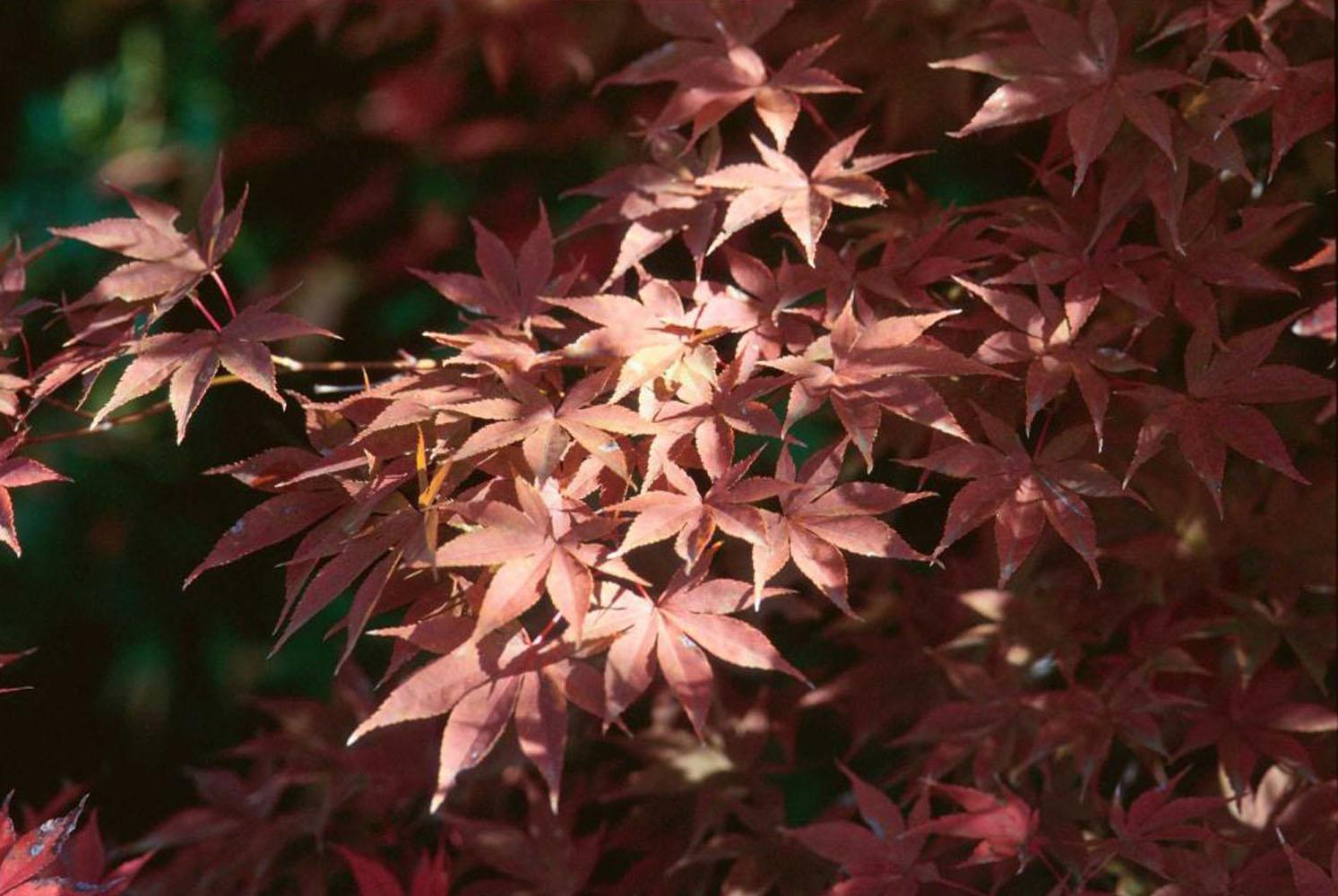Information Possibly Outdated
The information presented on this page was originally released on November 18, 2004. It may not be outdated, but please search our site for more current information. If you plan to quote or reference this information in a publication, please check with the Extension specialist or author before proceeding.
Japanese maples showing fall color
By Norman Winter
MSU Horticulturist
Central Mississippi Research & Extension Center
This past weekend I was giving a program in Tuscaloosa and noticed the Japanese maples were starting to show their first hints of fall color. The trees were really healthy and exquisite in form.
Another great town for Japanese maples is Brookhaven, which may be the garden spot of our state. They not only have many lace-leaf or dissected types, but also some of the oldest non-dissected Japanese maples.
I am a believer in Japanese maples and have grown some myself, but there is much mystery associated with this group of plants. These small trees are brilliant in the spring, with new red color, followed by exotic foliage throughout the summer, and often with a fall blaze of crimson, orange and yellow.
The Japanese maple can be used as a bonsai, a small tub planting or an awesome accent, or several can be grouped artistically. But there are hundreds -- if not thousands -- of selections that most of us know little about.
The Japanese maple is known botanically as Acer palmatum. Our native red maple is Acer rubrum. Nurserymen usually think of the Japanese maple as having two leaf types: non-dissected and dissected.
Japanese maples can be grouped by three types: uprights, lace-leafs and bush-dwarf types. Among the uprights are the linearilobums, which have long, narrow lobes on each leaf. The lace-leafs are dissectums with pinnately dissected leaves. The growth habit of the lace-leaf type is usually cascading or weeping. The bush-dwarf group includes maples that are slower-growing and bushy.
Popular cultivars in the non-dissected group are Bloodgood, a Mississippi Medallion award winner, Oshu beni and Senaki. Some of those in the dissected group are Crimson Queen, Ever Red and Tamukeyama.
Mississippi is fortunate to be able to grow the Japanese maple. They prefer well-drained, moist, slightly acidic soils. I like them best with morning sun and afternoon shade, or in areas with dappled light. Even though I have seen gorgeous specimens in Poplarville's full sun, I still recommend some shade.
Supplemental water during the summer helps prevent leaf scorching. They take 10 years to reach 15 feet. Some of the oldest plantings of Japanese maples in the United States are in the 50-foot range.
Those in the dissectum group have more of a layered, mushroom shape in the garden, and their heights are usually much shorter.
Newly leafed-out Japanese maples are gorgeous in early spring combined with azaleas, dogwoods and Louisiana phlox. They are exceptional in rock gardens and in combination plantings with full-size and dwarf conifers like the Chamaecyparis Crippsii.
The slow growth rate, coupled with the many groups, sub-species and cultivars, intimidate many, making it hard to start an evaluation program. The Missouri Botanical Garden in St. Louis has one of the best collections and is well worth the trip.
If you don't have a Japanese maple, get one or two. Fall is a great time to plant them. Also, don't forget Autumn Blaze, a red maple that was a Mississippi Medallion award winner a couple of years ago.



